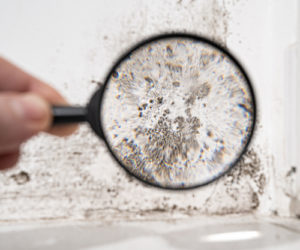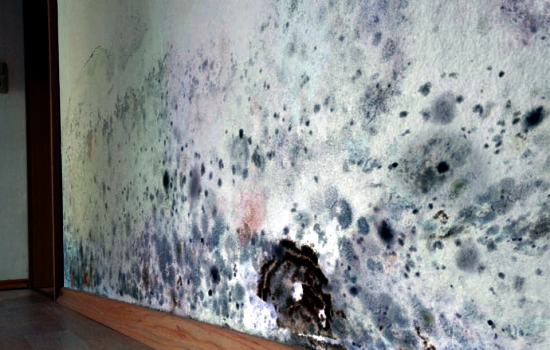Professional Tips for Blog Post Mold And Mildew Remediation Success
In the realm of mold remediation, effectively removing mold is only half the fight; the real difficulty exists in stopping its reappearance. By sticking to experienced suggestions and finest practices, individuals can guard their spaces versus mold and mildew renewal and preserve a healthy and balanced interior setting.
Monitor Moisture Degrees Regularly
Regular monitoring of humidity degrees is essential in making sure the efficiency of post mold and mildew removal efforts. After finishing mold and mildew remediation procedures, maintaining ideal humidity levels is vital to stop mold and mildew re-growth and make certain a healthy and balanced indoor setting. Surveillance humidity degrees enables early discovery of any kind of spikes or changes that could possibly lead to mold and mildew renewal. High moisture levels above 60% create a favorable atmosphere for mold and mildew to prosper, making regular keeping track of an aggressive procedure to avoid any kind of future mold and mildew issues - testing air quality after mold remediation.
Making use of hygrometers or wetness meters can assist in accurately gauging humidity levels in various locations of the home. These devices give real-time data that allows removal professionals to make informed choices relating to air flow, dehumidification, and various other essential actions to preserve excellent moisture levels post-remediation. Additionally, developing a routine schedule for humidity checks, particularly in high-risk areas such as cellars, cooking areas, and shower rooms, is a positive method to mold prevention. By constantly keeping an eye on humidity levels, residential property owners can properly minimize the risk of mold reoccurrence and maintain a healthy and balanced interior environment post-remediation.
Conduct Thorough Inspections Post-Remediation
Complying with the conclusion of mold and mildew remediation treatments, it is necessary to carry out comprehensive examinations to verify the performance of the remediation procedure. These post-remediation inspections are vital in ensuring that the mold and mildew issue has been effectively dealt with which there is no recurrence or staying mold and mildew development. Evaluations must be performed by qualified specialists that have proficiency in recognizing mold and mildew and evaluating interior air high quality.
During these assessments, various methods such as aesthetic assessments, air sampling, and surface sampling might be used to extensively evaluate the remediated areas. Aesthetic assessments include a comprehensive inspection of the premises to look for any type of noticeable signs of mold growth or water damage. Air tasting assists in establishing the air-borne mold and mildew spore degrees, while surface sampling can detect mold particles on surfaces.
Implement Proper Ventilation Strategies
After guaranteeing the efficiency of the mold and mildew removal procedure with detailed inspections, the next vital step is to concentrate on carrying out appropriate ventilation techniques. Sufficient ventilation is vital in avoiding mold reoccurrence by regulating dampness degrees and promoting air blood circulation. To attain this, it is suggested to utilize exhaust fans in areas vulnerable to high humidity, such as restrooms and kitchens. Furthermore, opening doors and windows when climate permits can help improve air movement you can look here and decrease moisture Your Domain Name build-up. Air dehumidifiers and purifiers are also beneficial tools in keeping optimal interior air quality.
Proper ventilation not only aids in protecting against mold growth however likewise adds to the total health and comfort of occupants. By guaranteeing appropriate air flow throughout the residential or commercial property, you can decrease the danger of mold regrowth and create a healthier living setting.

Use Mold-Resistant Materials for Services
To improve the long-lasting efficiency of mold removal efforts, including mold-resistant products for repair services is vital in alleviating the danger of future mold development. Mold-resistant products are designed to hold up against wetness and inhibit mold and mildew development, making them an essential choice for areas vulnerable to dampness and moisture. When fixing areas affected by mold and mildew, utilizing materials such as mold-resistant drywall, mold-resistant paints, and mold-resistant caulking can aid stop mold reappearance.
Mold-resistant drywall is an outstanding choice to standard drywall in locations like shower rooms and cellars where dampness levels mold removal qualifications are higher. This kind of drywall has an unique finish that resists mold growth also when subjected to damp problems. Furthermore, making use of mold-resistant paints containing antimicrobial agents can additionally hinder mold and mildew growth on ceilings and wall surfaces.
In areas where moisture is usual, such as kitchen areas and shower rooms, utilizing mold-resistant caulking around bathtubs, sinks, and home windows can help secure out water and protect against mold and mildew from holding in fractures and gaps. By investing in these mold-resistant materials during repair work post-remediation, you can dramatically lower the likelihood of future mold issues and preserve a healthier interior setting.
Maintain Tidiness and Address Water Issues
After mold remediation, it is vital to maintain a clean environment to avoid the regrowth of mold and mildew. Leaks, water breach, or high humidity degrees can develop the ideal breeding ground for mold and mildew, so it is imperative to repair any kind of water-related issues right away.
To keep sanitation, think about using HEPA filters in vacuums and air purifiers to trap mold spores and prevent their blood circulation in the air. Making sure correct air flow in locations vulnerable to moisture build-up, such as kitchens and bathrooms, can help maintain humidity levels in check. By staying vigilant regarding tidiness and attending to water problems quickly, you can properly prevent mold reinfestation and maintain a healthy and balanced indoor setting.
Verdict

In the realm of mold removal, effectively getting rid of mold is just half the battle; the real obstacle lies in preventing its reappearance. After completing mold and mildew remediation treatments, maintaining optimum humidity levels is vital to prevent mold and mildew re-growth and make sure a healthy and balanced interior environment. High humidity degrees over 60% create a conducive setting for mold to grow, making normal keeping track of a proactive procedure to protect against any kind of future mold and mildew problems.
To enhance the long-lasting effectiveness of mold removal initiatives, incorporating mold-resistant products for repair work is vital in minimizing the risk of future mold development. After mold and mildew remediation, it is important to preserve a tidy atmosphere to stop the regrowth of mold and mildew.